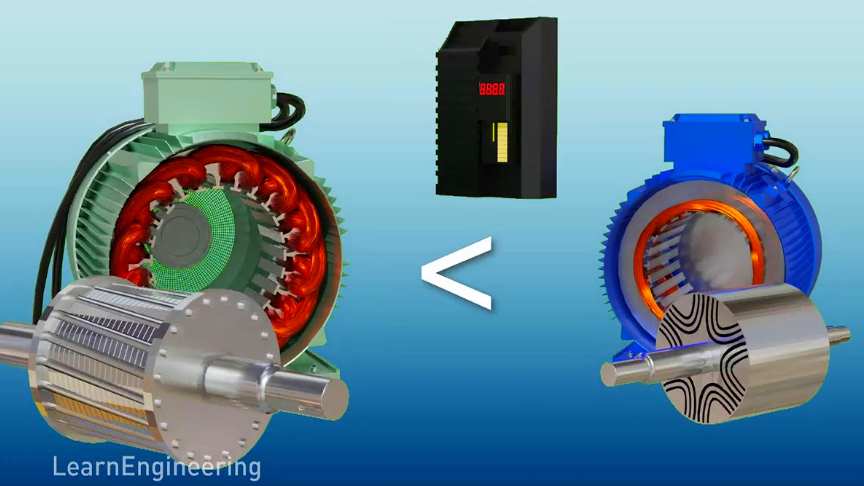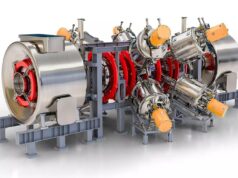Reluctance motor is a type of electric motor that induces non-permanent magnetic poles on the ferromagnetic rotor. The rotor does not have any windings. It generates torque through magnetic reluctance.Reluctance motor subtypes include synchronous, variable, switched and variable stepping.
source/image(PrtSc): Learn Engineering
Reluctance motors can deliver high power density at low cost, making them attractive for many applications. Synchronous reluctance motors have started replacing induction motors in most of the industries. Let’s understand the its physics and design features in detail.watch the video from Learn Engineering for full explanation:
Synchronous reluctance motors have an equal number of stator and rotor poles. The projections on the rotor are arranged to introduce internal flux “barriers“, holes that direct the magnetic flux along the so-called direct axis. Typical pole numbers are 4 and 6.The rotor operates at synchronous speeds without current-conducting parts. Rotor losses are minimal compared to those of an induction motor.
Advertisement
Once started at synchronous speed, the motor can operate with sinusoidal voltage. Speed control requires a variable-frequency drive.These uniquely designed machines enable the use of a distributed sinusoidal AC stator windings taking advantage of the cost effectiveness of standard induction stator construction.The synchronous reluctance motor is an attractive option for low torque applications requiring efficient operation.//wikipedia











